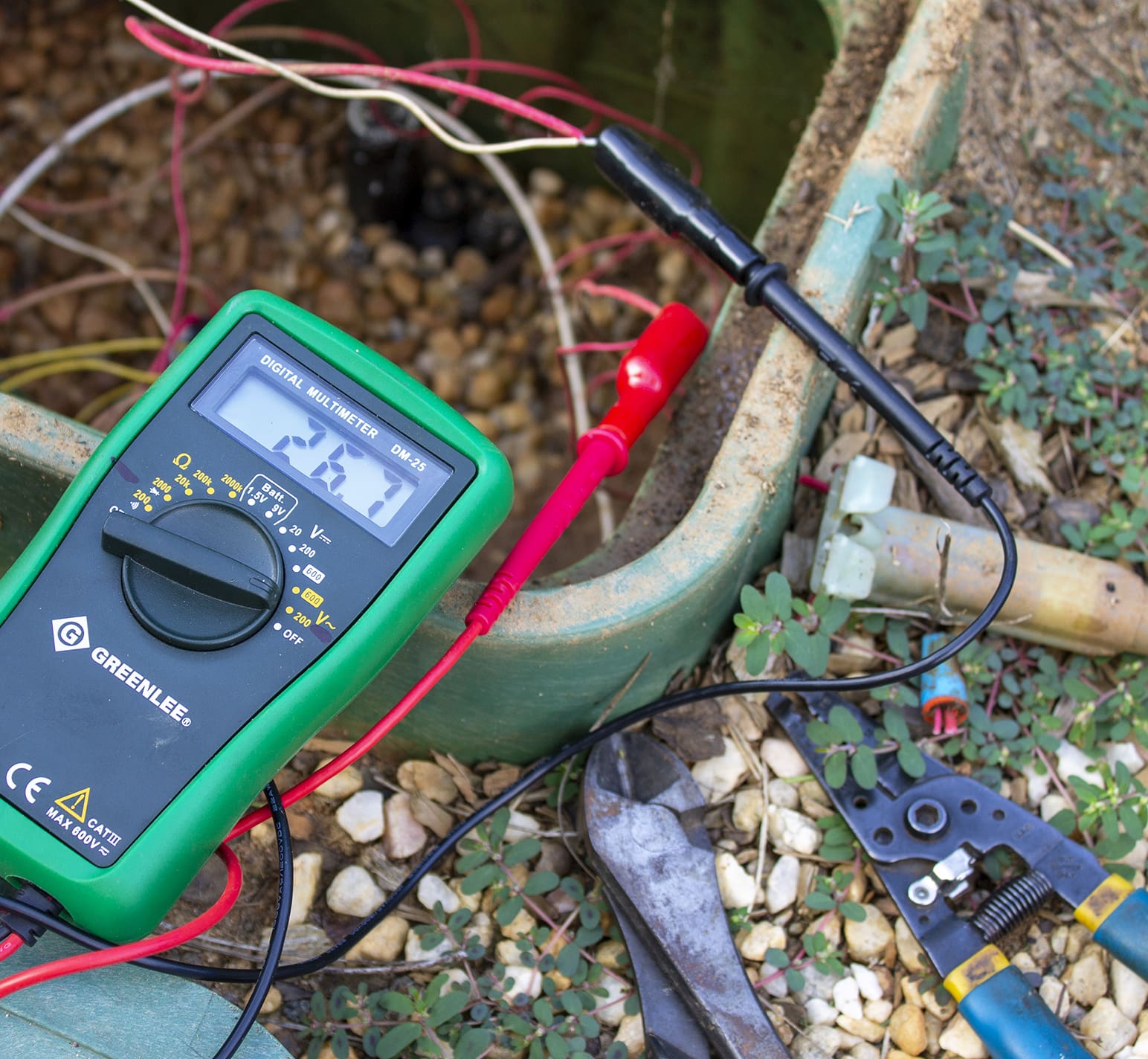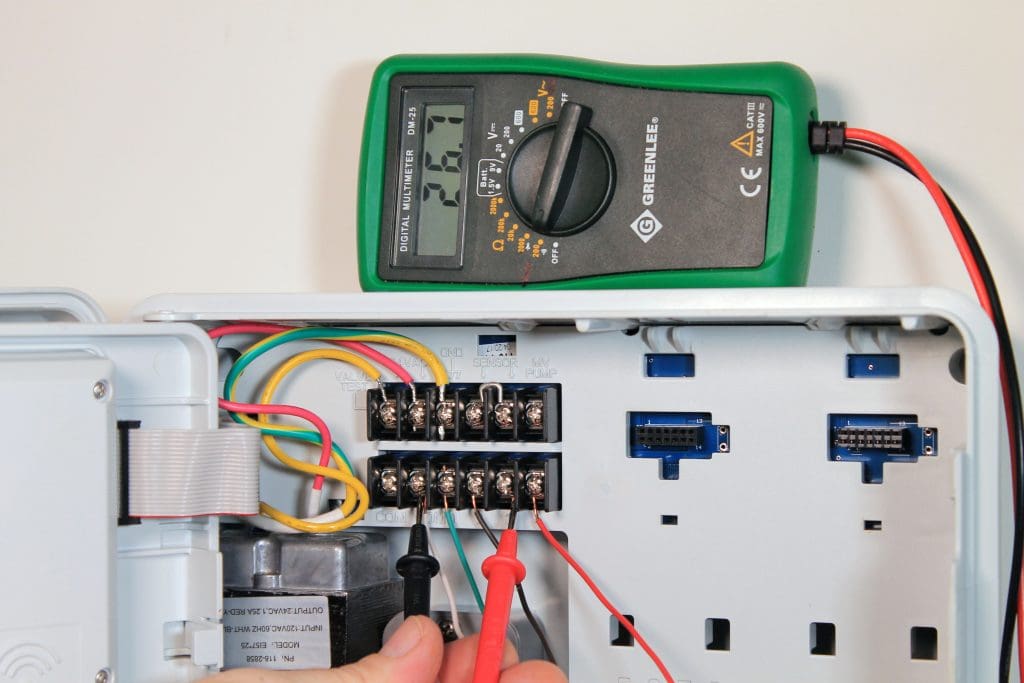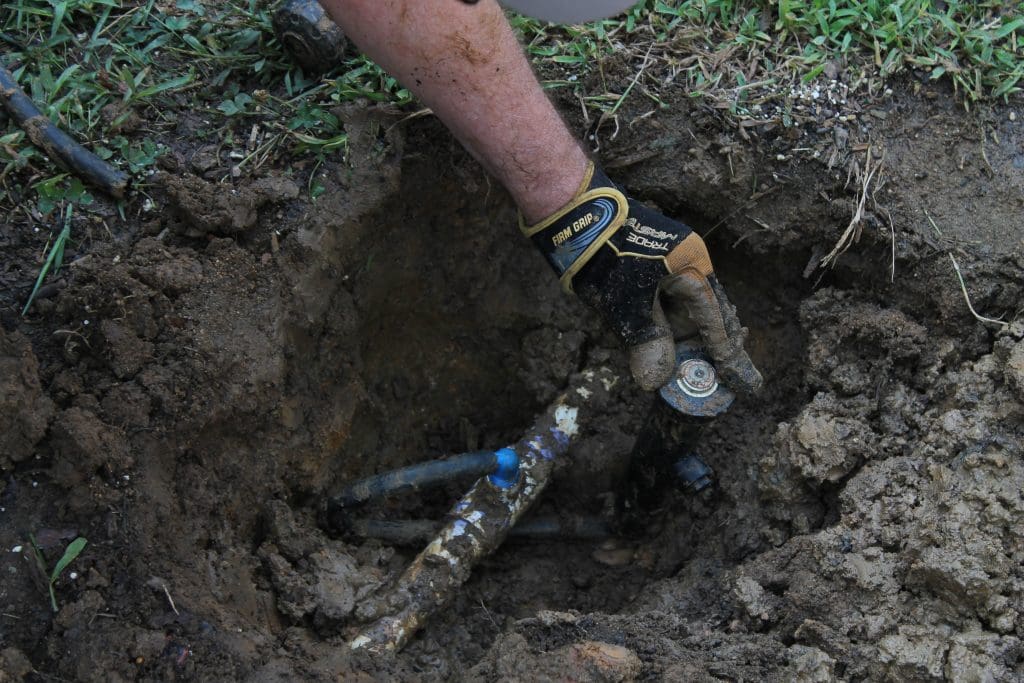
Because irrigation systems are mostly out of sight and out of mind for clients, unless something is visibly broken, they’re probably not calling your company to come fix anything. What will get them to pick up the phone is if they see the landscape declining.
“Almost always, regardless of an electronic or hydraulic problem, it’s the plants look terrible,” says Kurt Thompson, director of educational programs and an instructor with IrriTech Training. “When you overwater something, nobody notices all the problems that happen until they get way far developed, and they’re very hard and expensive to fix. Underwatering you know instantly.”
Thompson says if you decide to offer irrigation repair services, knowing how to explain the situation to the customer so they understand is equally important as the technical knowledge to fix the problem.
He adds that there is a large market for irrigation maintenance, and it is underserved as troubleshooting is not a common skill set. Thompson says if you want to offer irrigation services, you have to bring in the right employees and train them up.
“You got to be patient,” Thompson says. “You’ve got to invest in the education part of it, or you’re just going to upset as many customers as you help.”
Follow a Process
The main reasons for irrigation problems include something being wrong hydraulically, electrically, or broken components.

“Anybody doing irrigation service, they have to know the science that’s involved in irrigation,” Thompson says. “There are physics, hydraulics, electronics. There are all kinds of things at work and if you just go out and trial and error your way through it, there is a good probability you will repair it. But you won’t have any idea why.”
Thompson says much like how a pilot does a pre-flight checklist before every flight, irrigation technicians should follow a step-by-step process in the same order every time when troubleshooting a client’s irrigation system.
“We’re not crashing the landscape by not doing it, but it’s all about profitability and then finding the cause instead of just randomly fixing things,” Thompson says.
Thompson says with a process, you can identify if it is an electrical or a hydraulic problem early on. Failing to do so will cause you to go chasing down one path eliminating things you didn’t have to. He suggests doing the easiest thing first, as troubleshooting is a process of elimination.
Typically, the main symptom is either the water is not coming on, or the water is not turning off.
“We recommend the first thing you do is go to the valve and manually operate it because if it comes on, it’s an electrical problem,” Thompson says. “If it doesn’t come on, it’s a mechanical or hydraulic problem. It’s just that simple.”

Thompson says others might typically start troubleshooting from the irrigation controller since it’s so easy to access, but the technician can spend a lot of time only to find out the next thing they need to do is go to the valve and do a manual bleed. Thompson says instead by going straight to the valve, you can cut out an unnecessary step.
He says one main problem with troubleshooting is 99 percent of the time, you don’t know where the valve is, which is expensive to the customer as you need someone with the equipment and technical skill to efficiently find it. Thompson says it can be hard to find the valve as there usually aren’t record drawings left behind indicating where it’s located. He says using a wire locator to find the valve is part science, part skill and part luck.
Symptoms and Solutions
Some of the main electrical problems could be the solenoid has failed or the wiring between the valve and the controller has been damaged. The main causes of hydraulic problems with valves are debris inside the valve or a tear in the diaphragm.
Depending on the symptoms you’re seeing in the landscape, the possible root cause can vary. For instance, individual sprinkler heads not working could be from that head being blocked or broken. Low water pressure at the sprinkler heads can be caused by the backflow device malfunctioning, pipe leaks, or a crushed irrigation line.
If there is water bubbling up from underground, see if this is taking place near a sprinkle head. If there isn’t one nearby, there’s probably a broken pipe underground. If it’s bubbling up at the sprinkler head, there could be a loose or broken connection, a leaky seal, or low head drainage.

“Or it could be the lowest sprinkler and the valve has a problem,” Thompson says. “It’s what we call weeping, which means there’s something wrong with the seal of the diaphragm in the valve and it’s just letting water out when it should be sealing tightly.”
If there is water coming out of the ground, digging becomes necessary because there’s no way to know which of these possible problems is the true culprit. Thompson says it doesn’t matter how good you’re at troubleshooting; you still can’t see through the dirt.
“Now it gets more expensive, not because it takes a great deal of skill to dig, but it takes time and the clean up to put it back so it doesn’t look like the end of the Caddyshack movie where your yard’s been blown up,” Thompson says.
Thompson says if a client is having multiple problems and frequently calling you back to the site, it can come down to an irrigation system that was poorly installed. In some cases, a solution is to simply replace the whole system.

